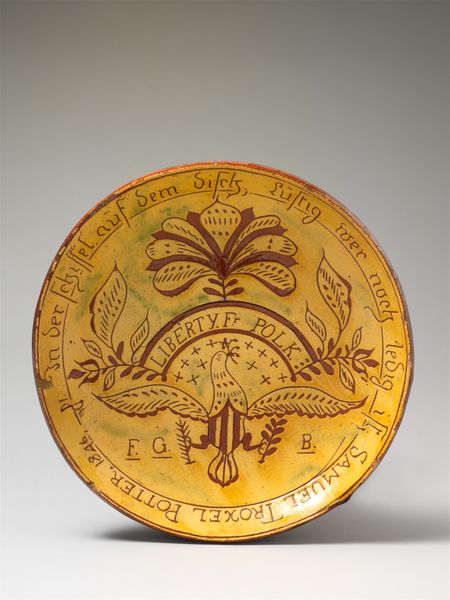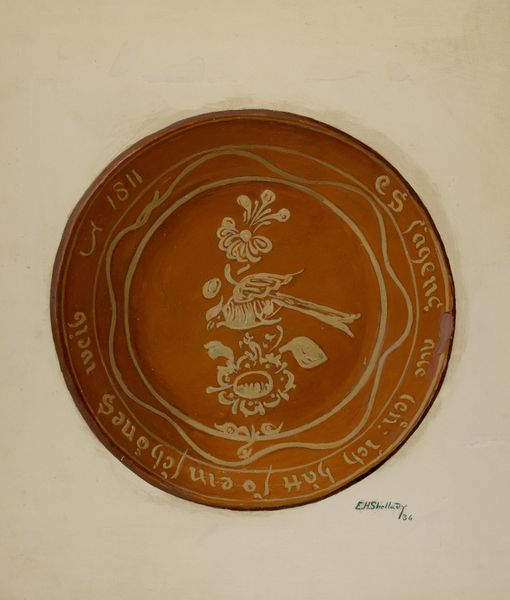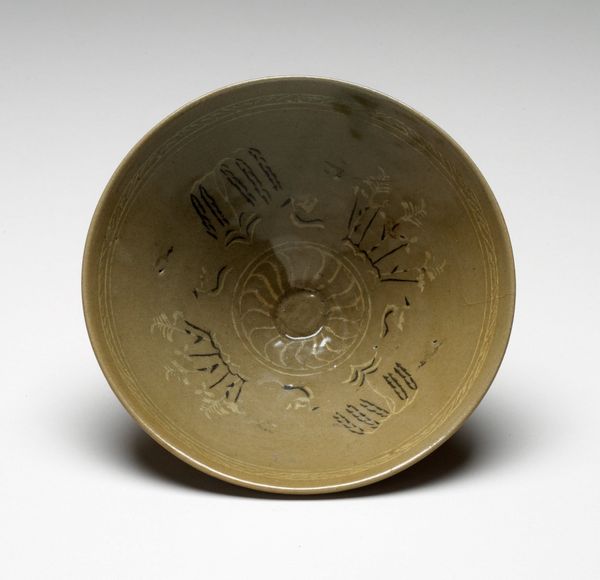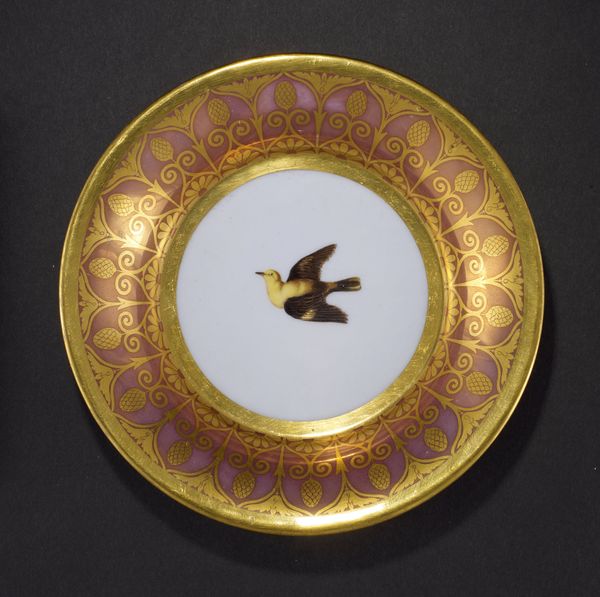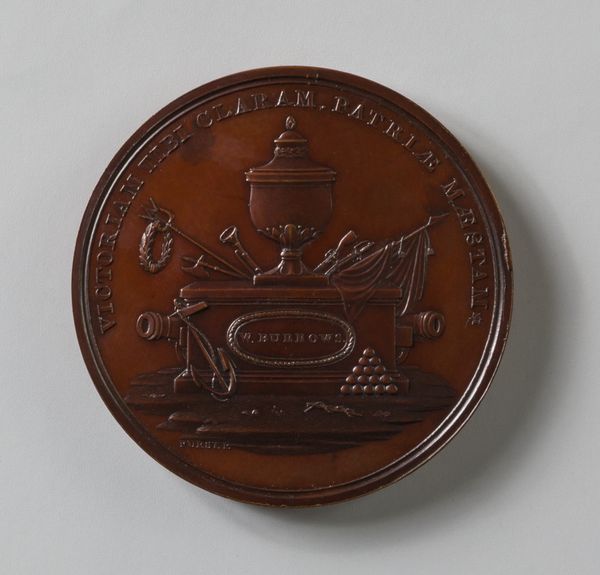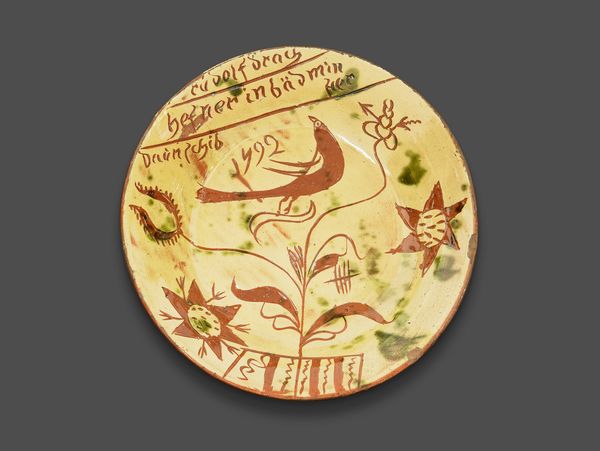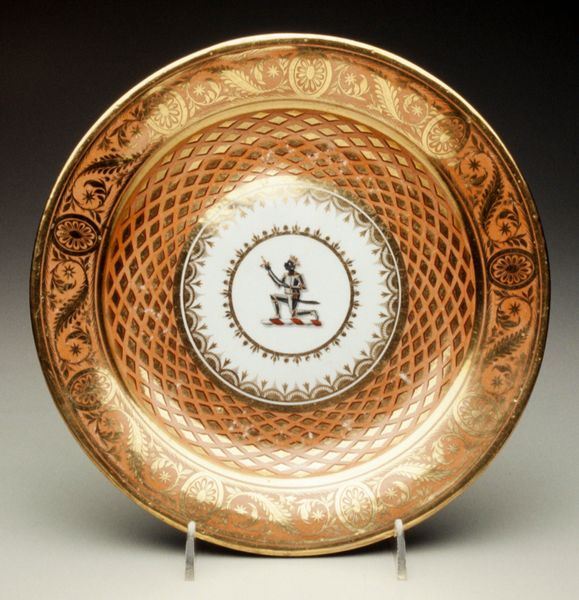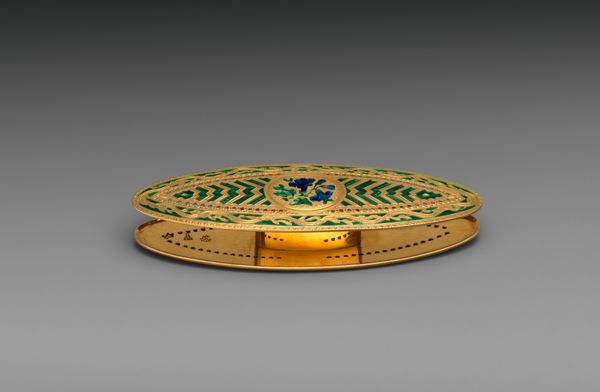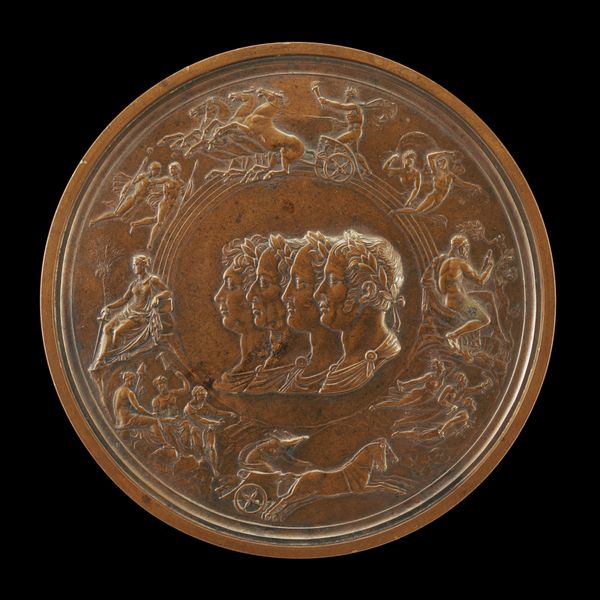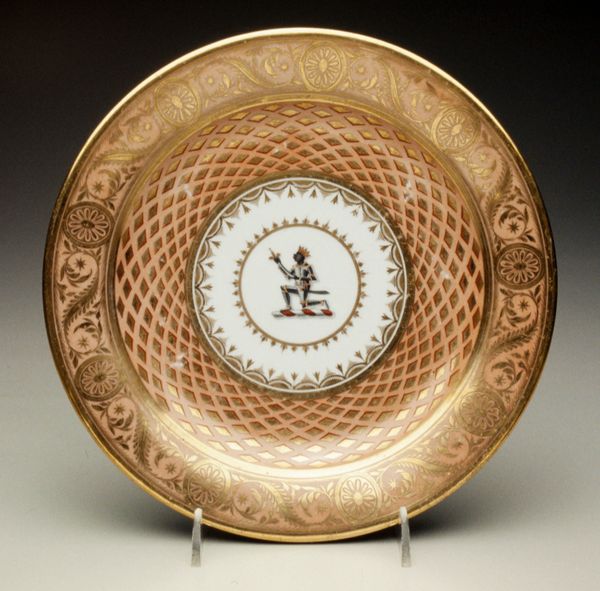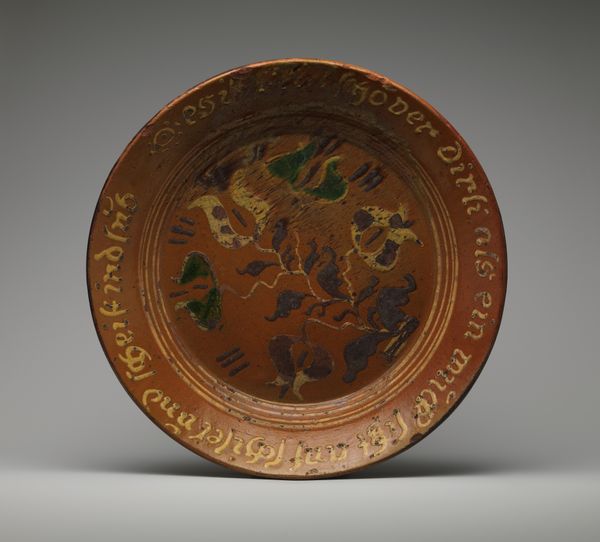
painting, ceramic, earthenware
#
painting
#
ceramic
#
flower
#
earthenware
#
stoneware
#
folk-art
#
united-states
#
decorative-art
Dimensions: Diam. 12 in. (30.5 cm)
Copyright: Public Domain
Curator: This is a Pennsylvania German earthenware plate, dating from about 1800 to 1810. You can find it at the Metropolitan Museum of Art. Editor: It's simple, rustic. The color palette of earthy reds and yellows against that deep reddish brown really strikes me, and it definitely gives it an aged feeling. I also spot text encircling the floral decoration, almost like a halo, although I can't read what it says. Curator: The inscription is in German, and typical of this style of folk art. It reflects a certain cultural pride but it is probably also meant to be instructional or to commemorate a specific family event. Editor: In that era, plates weren't mere utilitarian objects but signifiers. Do we know if such items were reserved for specific genders or class standings? Is there any record regarding its intended owner, such as a matriarch of the family, or the man? Curator: The floral design in the plate's center, almost symmetrical, speaks to traditional motifs, possibly with roots in earlier European folk art. Given its earthenware construction, such an object probably reflected a middle-class lifestyle; the wealthy might have been more disposed to fancier materials like porcelain. Editor: So its production represents a burgeoning economy where such items are accessible to a new tier of citizens. I’m trying to imagine the craftsperson; were they typically men or women artisans, working perhaps with apprentices, within family production structures? Curator: Usually a male endeavor. Pennsylvania German redware potteries, in the period when this plate was made, involved family-owned enterprises. This particular type of folk art emphasizes functionality, blending with a strong sense of regional and ethnic identity, particularly during a period of assimilation pressure in the newly-formed United States. Editor: So the act of creating this isn’t merely about design. Instead, the inscription acts as a strong marker. Even for viewers like me, who struggle to decipher the precise inscription, it offers insights into the role objects can play in identity creation. The plate is more than just decorative art; it’s a quiet form of cultural resistance. Curator: Precisely. Understanding these social undercurrents allows us to contextualize this object. By appreciating this Plate as more than decorative, we honor the heritage of a community negotiating its place within the nascent American landscape. Editor: Absolutely, this gives me an avenue into contemplating its intersectional impact within society.
Comments
No comments
Be the first to comment and join the conversation on the ultimate creative platform.
